November 2025
Market Update
Transportation Trends
General Outlook
- Shippers should prepare for potential disruptions and increased rates as we head into the Holiday season.
- Demand will remain stable to slightly down until we get closer to the Holiday season.
- Retail sales rose 0.6% in October, and 5% year-over-year.
- Tariff-related delays may impact production, putting pressure on prices.
- The Middle East tension has pushed some concerns around the oil volatility in the market.
- Labor market: Private employers added 42,000 jobs in October; this is a rebound of 2 consecutive months of decline.
- Unemployment at 4.36%, up 4.14% a year ago.
- 30-year fixed mortgage is at 6.27% in October.
- 15-year fixed mortgage is at 5.58%.
LTL
- Current Market
- LTL is still experiencing a soft market; the down market is reflective based on lower manufacturing and more cautious consumer spending.
- Even with demand being down, soft carrier capacity is slowly leaving the market, which could have an effect on continued price increases.
- LTL carriers have implemented GRI’s (General Rate Increases) around 4-7% despite the down market.
- NMFC reclassification updates are changing the LTL pricing is shifting to more of a density-based program.
- It is very important to get a better understanding of your dimensions to avoid additional cost.
- Key Takeaways
- Look to lock in contractual pricing were appropriate.
- Review your packaging and dimensions to take advantage of the density-based pricing.
- Continue to build carrier relationships as the market continues to make changes.
- Invest or partner with a company to better utilize automation to help control cost.
Truckload
- Current Market
- Carrier continues to grow tighter even as we see the outbound tender volume decrease.
- Regulatory changes, such as the new CDL rule, and increased operating cost for carriers, we expect capacity to continue to tighten in 2026.
- Tariffs on truck parts and as well as imported goods are raising cost for truckload fleets.
- Factors on increased carrier costs which is influencing the smaller carrier pushing them out of the market.
- Driver wages up 7.6%
- Insurance up 12.5%
- Equipment costs up 8.8%
- Factors on increased carrier costs which is influencing the smaller carrier pushing them out of the market.
- Carrier continues to grow tighter even as we see the outbound tender volume decrease.
- Key Takeaways
- The TL market is at risk due to increased costs and lack of capacity.
- Technology will be key to driving compliance with core carriers.
- Start your planning now! Find a partner that can provide you with technology, visibility, and sustainability in a volatile market.
Reefer rates rise ahead of Thanksgiving
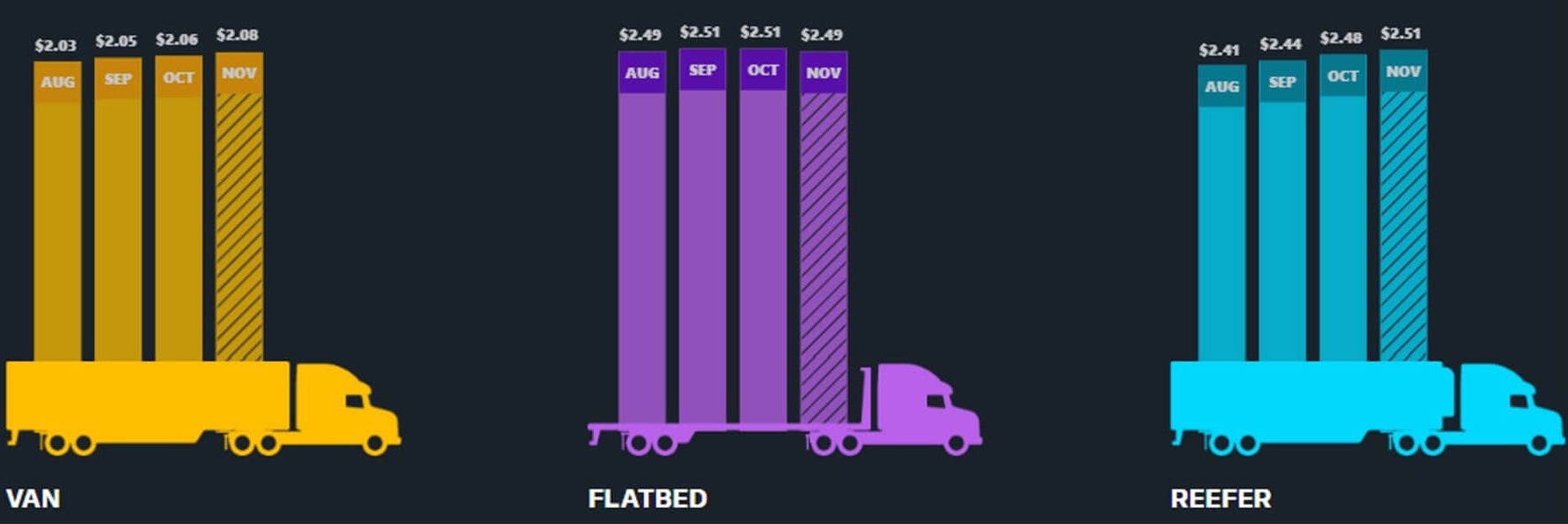
Outbound Tender Volume - All Modes
- Outbound tender volume remains relatively flat as we get closer to Thanksgiving. Outbound volume continues to trend down vs. previous years.
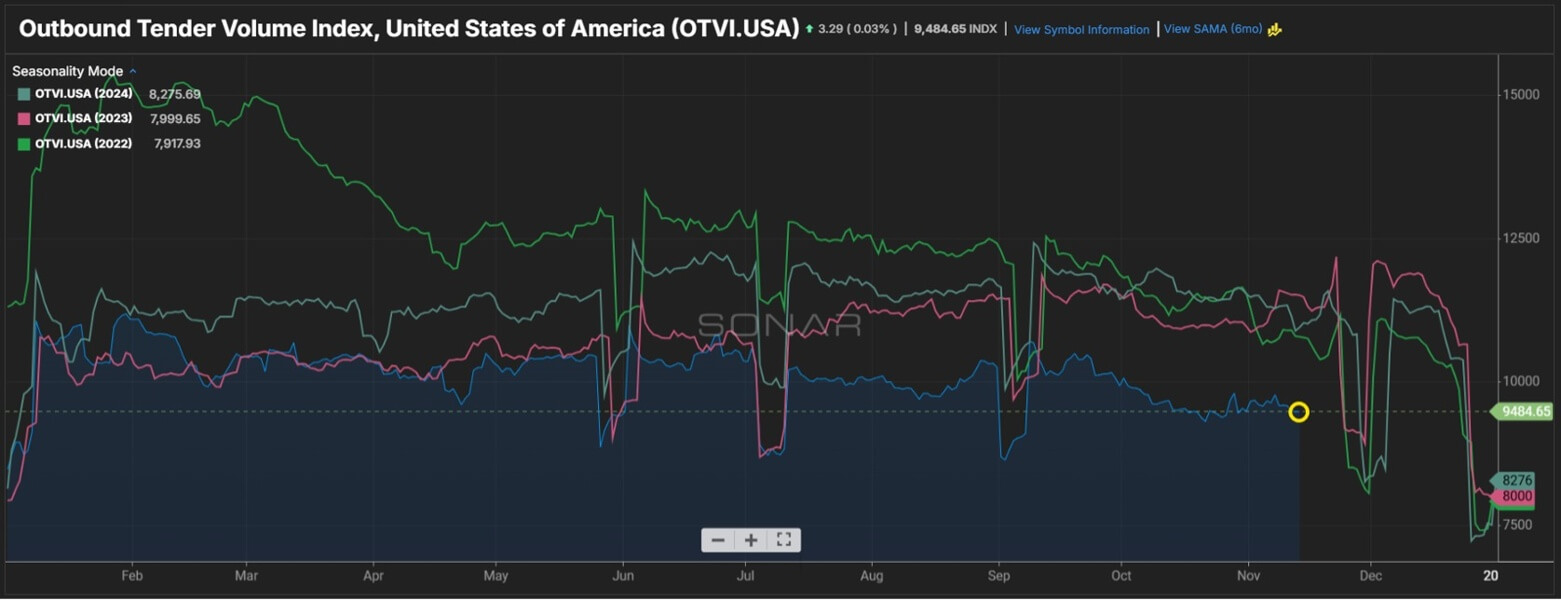
Outbound Tender Reject - All Modes
- Overall Rejects still slightly up vs. last year even with less outbound volume.
- Capacity sill playing a large role in the overall rejections remaining higher in 2025.

Outbound Tender Reject – by Mode
- Orange Line – Flatbed: Rejections trend along with last year at this same time.
- Very important to keep a close eye on the overall outbound volume to ensure you are securing capacity in this market.
- Green line – Reefer: Rejections for Reefer up slightly this month vs. last month.
- Similar to flatbed, increased outbound volume will have a significant impact on capacity in the Reefer space.
- White line – Van: Van Rejections up this month vs. last month.
- Rejections continue to fluctuate month- over-month but still remain flat since the start of this year.

Carrier Authorities
- This graph indicates we have less transportation companies coming into the market based on the current demand.
- Authorities continue to drop which is causing rejections to increase despite the overall volume decrease compared to 2024.
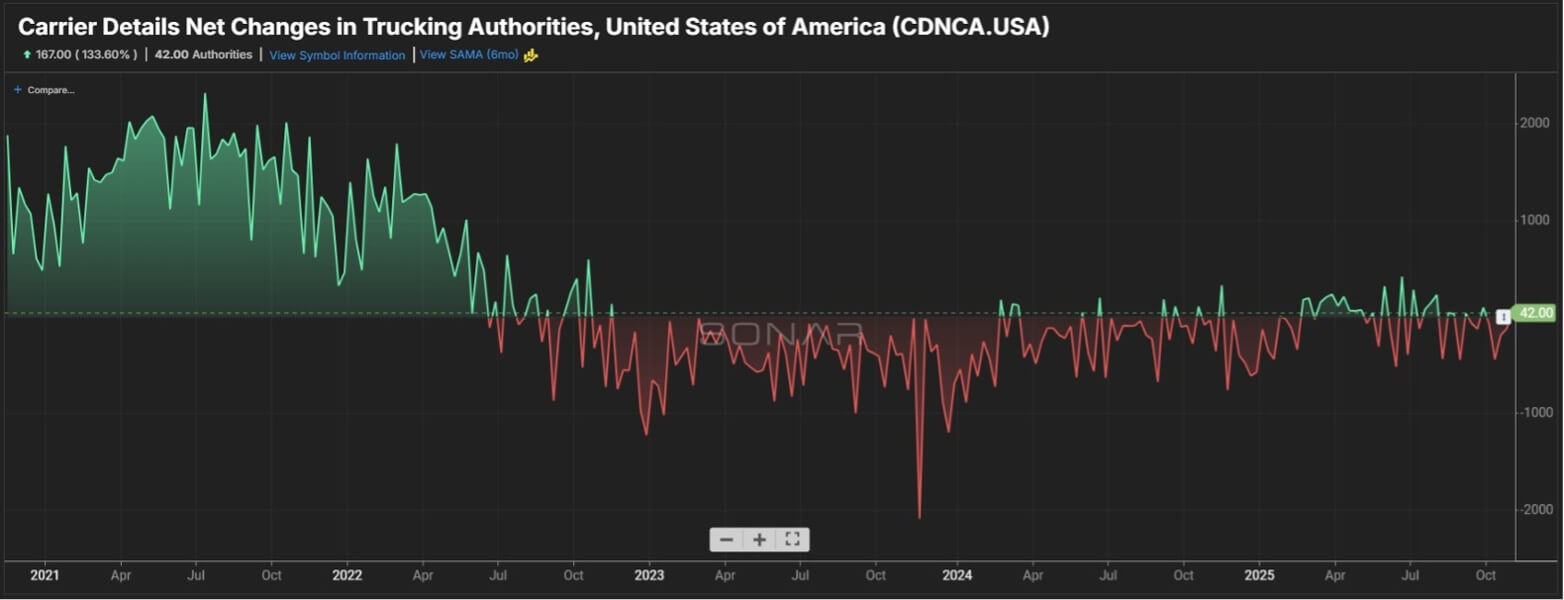
Demand vs. Capacity Metrics - October 2025

Van Load-to-Truck Ratio
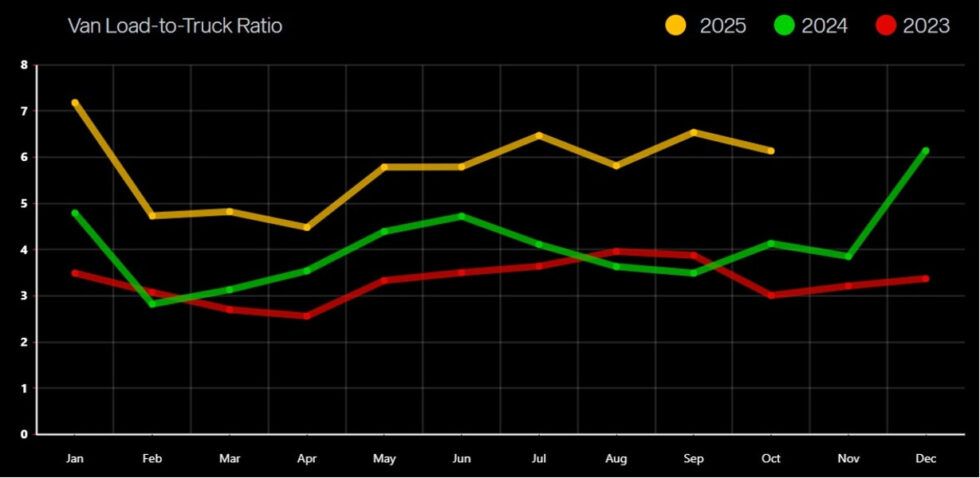
Reefer Load-to-Truck Ratio
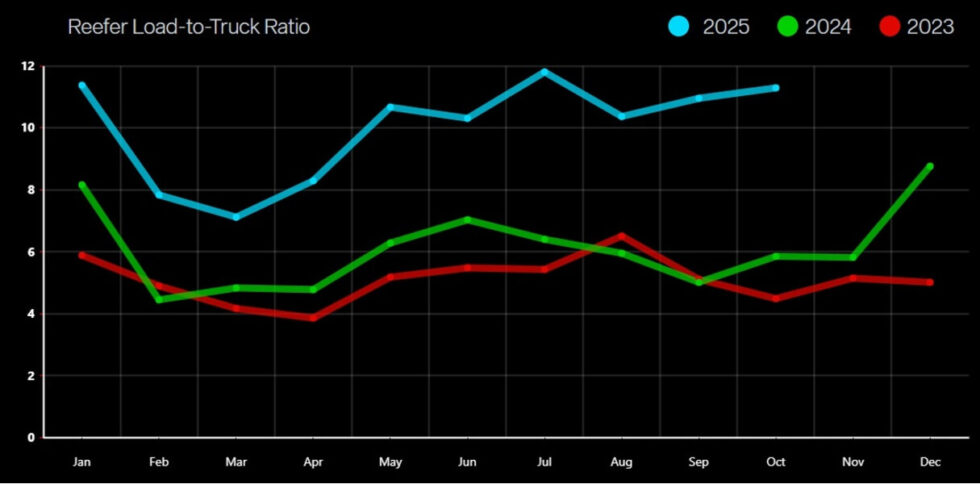
Flatbed Load-to-Truck Ratio
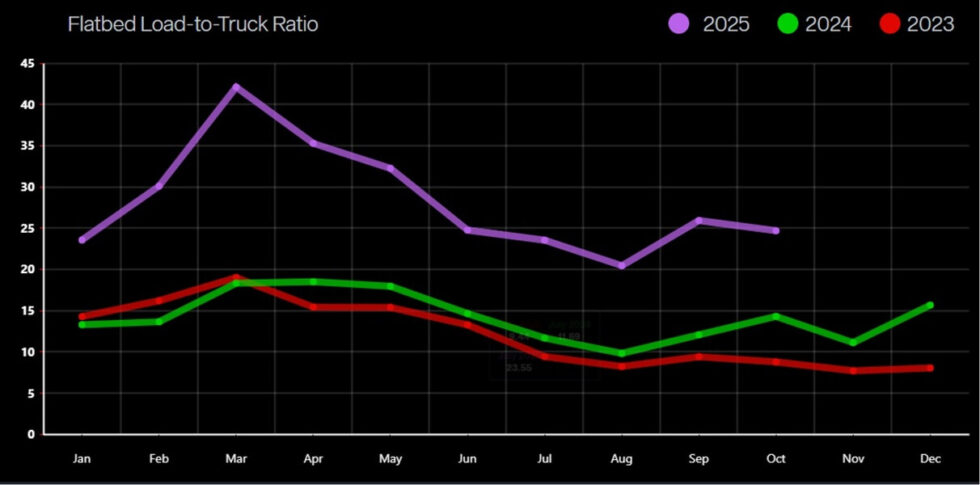
International
- Current Market
- U.S. imports are expected to fall in the double digits in Q4.
- Capacity improved by 7%, but still down 15% year-over-year.
- Ocean rates rebounded in October by 39% but remain 44% below last year.
- U.S. – China tariffs have had a significant impact on eastbound volumes.
- TEU volume down 0.1% vs. September, but down 7.5% year-over-year
- Key Takeaways
- Secure space early when moving ocean freight to help control the cost.
- Consider mini bids to help control the volatility of the market.
- Factor in tariff-driven costs that are having an impact on heavy international lanes.
- Secure space early when moving ocean freight to help control the cost.
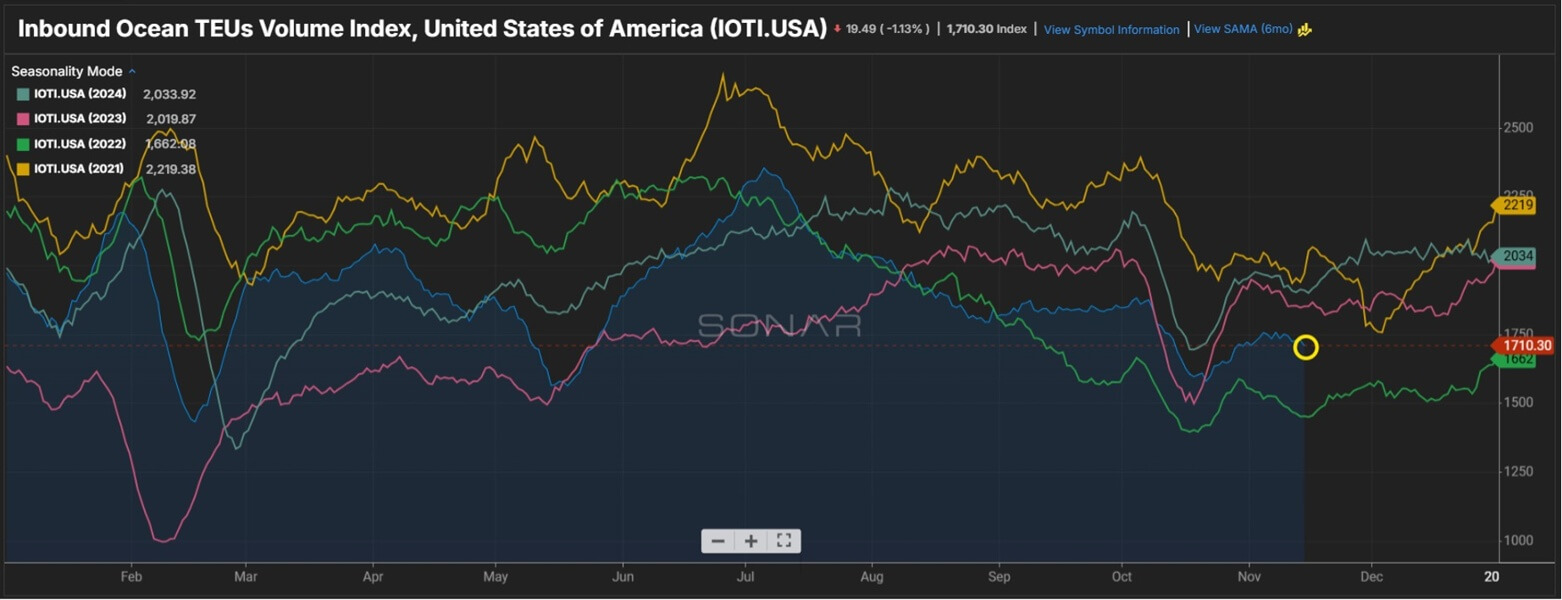
Cross Border
- Mexico exports to the U.S. have surged 13.8% year-over-year
- Inbound to Canada stronger than outbound; cross-border freight accounts for 65% of all Canadian spot posts.
- Rates generally stable, but demand still down based on a weaker U.S. retail and manufacturing productivity.
- Weather will continue to be a major factor in Canada as we get closer to winter.


Total Spot Rates
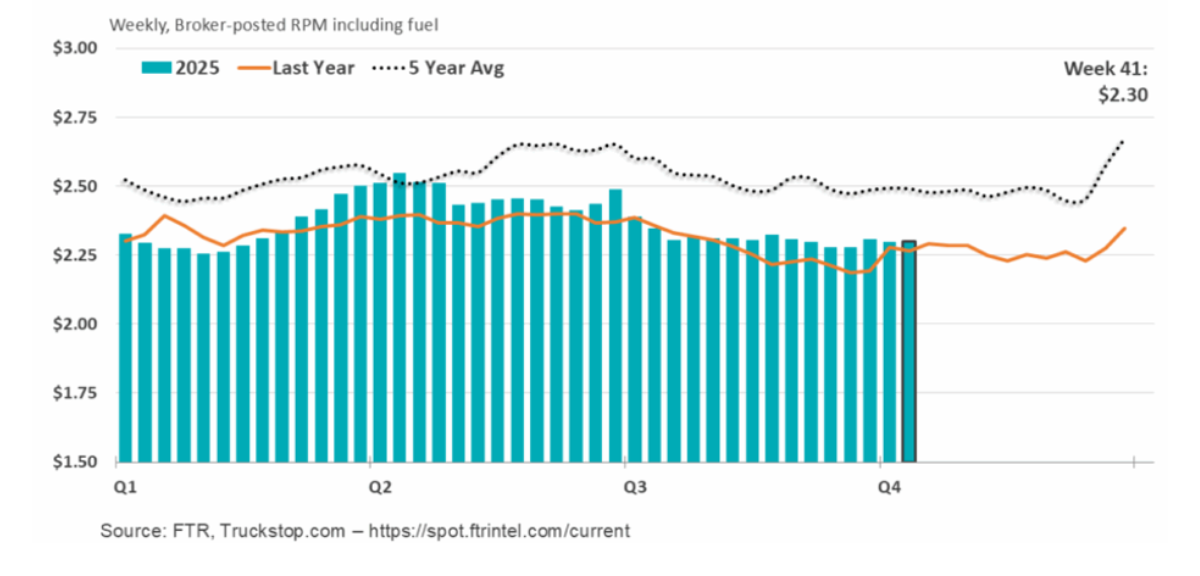
Fuel Forecast - DOE
- 2024 diesel fuel retail prices averaged $3.761/gallon through Q4 2024 and Q1 2025 finished lower at an average $3.631/gallon, and Q2 finished at $3.555/gallon.
- Fuel for Q3 finished at $3.757/gallon and Q4 is tracking $3.694/gallon to close out 2025.
Energy Information Administration Diesel Fuel Prices January 1, 2020 - September 31, 2025




